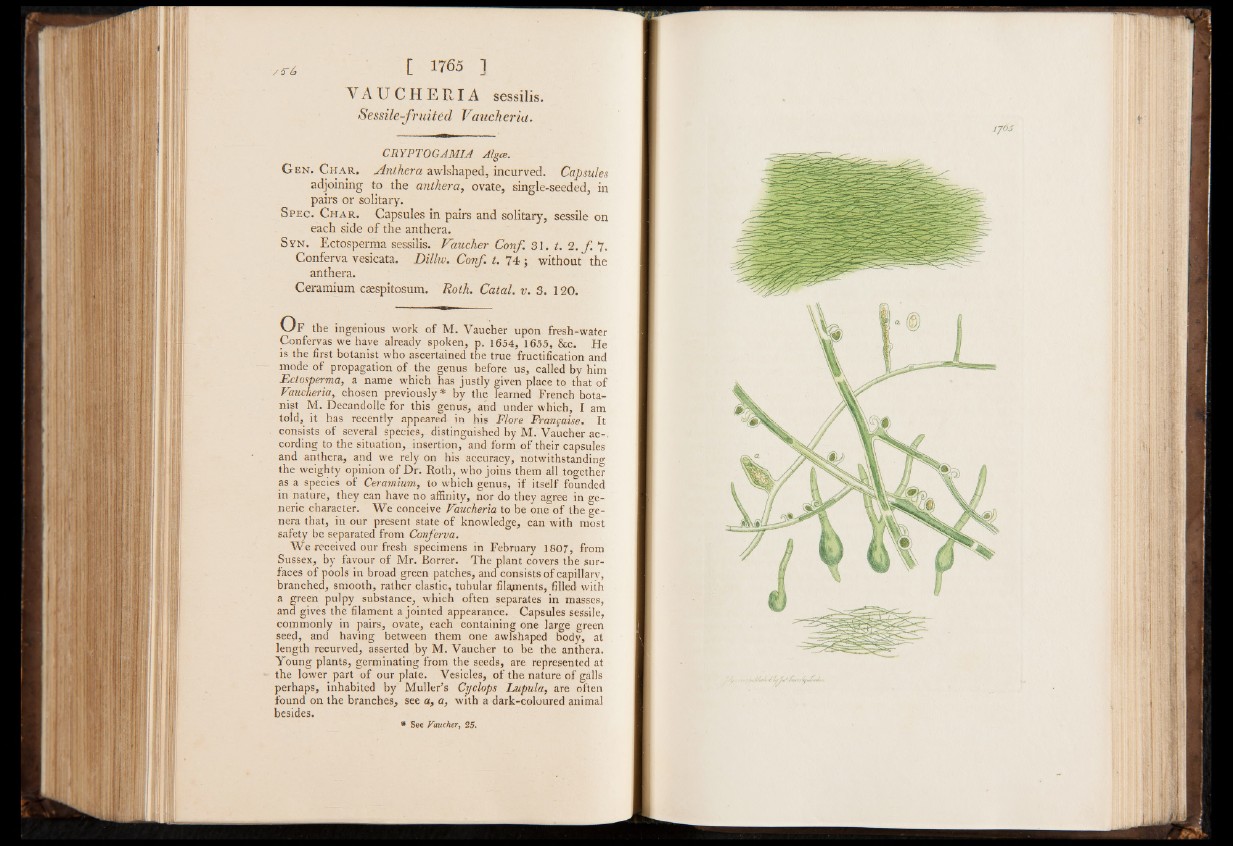
VAU C H E R I A sessilis.
Sessile-fruitéd Vaucheriu.
CRYPTOGAMIE Algce.
G en. Char. Anihera awlshaped, incurved. Capsules
adjoining to the anihera, ovate, single-seeded, in
pairs or solitary.
Spec. Char. Capsules in pairs and solitary, sessile on
each side of the anthera.
Syn. Ectosperma sessilis. Vaucher Conf. 31. t. 2. f 7.
Conferva vesicata. Dilhv. Conf. t. 74 ; without the
anthera.
Ceramium cæspitosum. Roth. Catal. v. 3. 120.
O f the ingenious work of M. Vaucher upon fresh-water
Confervas we have already spoken, p. 1654, 1655, &c. He
is the first botanist who ascertained the true fructification and
mode of propagation of the genus before us, called by him
Ectosperma, a name which has justly given place to that of
Vaucheria, chosen previously* by thé learned French botanist
M. Decandolle for this genus, and under which, I am
told, it has recently appeared in his Flore Française. It
consists of several species, distinguished by M. Vaucher ac-.
cording to the situation, insertion, and form of their capsules
and anthera, and we rely on his accuracy, notwithstanding
the weighty opinion of Dr. Roth, who joins them all together
as a species of Ceramium, to which genus, if itself founded
in nature, they can have no affinity, nor do they agree in generic
character. We conceive Vaucheria to be one of the genera
that, in our present state of knowledge, can with most
safety be separated from Conferva.
We received our fresh specimens in February 1807, from
Sussex, by favour of Mr. Borrer. The plant covers the surfaces
of pools in broad green patches, and consists of capillary,
branched, smooth, rather elastic, tubular filaments, filled with
a green pulpy substance, which often separates in masses,
and gives the filament a jointed appearance. Capsules sessile,
commonly in pairs, ovate, each containing one large green
seed, and having between them one awlshaped body, at
length recurved, asserted by M. Vaucher to be the anthera.
Young plants, germinating from the seeds, are represented at
the lower part of our plate. Vesicles, of the nature of galls
perhaps, inhabited by Muller’s Cyclops Lupula, are often
found on the branches, see a, a, with a dark-coloured animal
besides.
* See F a u c h e r , 25.